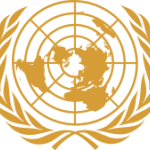- Industry: NGO
- Number of terms: 31364
- Number of blossaries: 0
- Company Profile:
The United Nations Organization (UNO), or simply United Nations (UN), is an international organization whose stated aims are facilitating cooperation in international law, international security, economic development, social progress, human rights, and the achieving of world peace.
Reduction or loss of the biological or economic productivity and complexity of rain-fed cropland, irrigated cropland, or range, pasture, forest or woodlands resulting from natural processes, land uses or other human activities and habitation patterns such as land contamination, soil erosion and the destruction of the vegetation cover.
Industry:Environment
Natural resources that, after exploitation, can return to their previous stock levels by natural processes of growth or replenishment. Conditionally renewable resources are those whose exploitation eventually reaches a level beyond which regeneration will become impossible. Such is the case with the clear-cutting of tropical forests.
Industry:Environment
Class of persistent, broad-spectrum insecticides that linger in the environment and accumulate in the food chain. Among them are dichlorodiphenyltrichloroethane (DDT), aldrin, dieldrin, heptachlor, chlordane, lindane, endrin, mirex, hexachloride and toxaphene. Another example is trichloroethylene which is used as an industrial solvent.
Industry:Environment
Type of fishing involving very long nets that drift with the winds and currents, thus creating a webbing curtain in which fish are enmeshed. It may result in (a) commercially important species' being unusable when landed owing to a long soak time or damage by predators and (b) incidental by-catch of non-targeted fish and other animals.
Industry:Environment
1. Alteration in the qualities of land that improves its potential for land use. 2. The only change in non-produced natural (economic) assets accounted as gross fixed capital formation in the SNA. L.i. consists of acquisitions (expenditures) related to land reclamation, forest clearance, drainage of wetlands, and flood and erosion prevention.
Industry:Environment
Assessment of the direct economic and social costs and benefits of a proposed project for the purpose of project or programme selection. The cost-benefit ratio is determined by dividing the projected benefits of the programme by the projected costs. A programme having a high benefit-cost ratio will take priority over others with lower ratios.
Industry:Environment
Is the value of all fixed assets still in use at the beginning of the accounting period, at the actual or estimated price of new assets of the same type, irrespective of the age of the asset. In the SEEA, capital stock is defined as the sum of the value of fixed assets and non-produced economic assets at the beginning of the accounting period.
Industry:Environment
Presentation of internal (ancillary) environmental protection activities (environmental clean-up and reuse of materials) and their cost as a separate production activity delivering the services at cost to the establishment carrying out these activities. Output of the establishment is increased in this manner, while value added remains unchanged.
Industry:Environment
1. Process by which fish enter the exploitable stock and become susceptible to fishing. 2. The number of fish added to the exploitable stock, in the fishing area, each year, through a process of growth or migration. 3. The number of fish from a year class reaching the age-at-first-capture. 4. The number of fish entering any age or size interval.
Industry:Environment
Use of predatory or parasitic organisms instead of highly pollutant chemicals to reduce the number of harmful animals or plants, as in, for example, the destruction of the citrophilus mealy bug by parasitic species of the chalcid wasp; the predation of beetles on the cottony-cushion scale; and the control of Japanese beetles by Bacillus popilliae.
Industry:Environment
